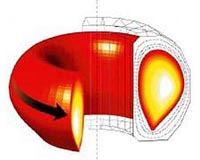 |
Madrid (AFP) Nov 6, 2009 The new "smart meters" utilities are installing in homes around the world to reduce energy use raise fresh privacy issues because of the wealth of information about consumer habits they reveal, experts said Friday. The devices send data on household energy consumption directly to utilities on a regular basis, allowing the firms to manage demand more efficiently and advise households when it is cheaper to turn on appliances. But privacy experts gathered in Madrid for a three-day conference which wraps up Friday warned that the meters can also reveal intimate details about customers' habits such as when they eat, what time they go to sleep or how much television they watch. With cars expected to be fuelled increasingly by electricity in the coming years, the new meters could soon be used to gather information on consumer behaviour beyond the home, they added. "The collection and storage and retention of the data makes it vulnerable to security breaches as well as to government access," Christopher Wolf, the co-chairman and founder of the Washington-based Future of Privacy Forum, told AFP. "It is really an issue of how much information about us can be collected by a third party, how much do they really need, how long do they need to keep it, what should the rules be on retention and when should destruction of it occur." More than eight million "smart meters" have already been installed in the United States and the number is projected by the government to rise to 52 million by 2012. Last month US President Barack Obama announced 3.4 billion dollars (2.3 billion euros) in grants to modernise the country's electricity grid, part of which will pay for about 18 million "smart meters." The European Parliament passed an energy package in April which proposed that 80 percent of electricity consumers have "smart meters" by 2020. In Italy 85 percent of homes already have smart meters installed, the highest penetration rate in Europe, according to the Future of Privacy Forum. France is second with a 25 percent penetration rate. "This is certainly the next stage, the new frontier, in the potential for privacy invasion," Elias Quinn, a senior policy analyst at the Center for Energy and Environmental Security at the University of Colorado, told AFP. "The potential is great for privacy invasion depending on who can have access to this information. We are kind of walking into 'smart meter' development blindly. There is no general informed consent." Utilities could be tempted to sell the data on their customers' behaviour to marketers who use it to pitch advertising geared to their habits, said Quinn. A restless sleeper who gets up frequently throughout the night -- identified by electricity consumption records that show he frequently turns on the lights -- could be targeted with adverts for sleep aids for example. Insurance firms, meanwhile, could use the data to justify charging higher fees to a driver whose electricity consumption records indicate he often drives while sleep deprived or regularly gets home at around the time the bars close. The utilities would be following the lead of Internet service providers which already gear online advertising based on the content of the Web page being viewed by their customers. "The personal benefits of the 'smart meters' outweigh the risks. The real danger is that people do not know what the risks are," said Quinn, who recommends laws that restrict the resale of data as a way to prevent abuses. Share This Article With Planet Earth
Related Links Powering The World in the 21st Century at Energy-Daily.com
 High-Performance Plasmas May Make Reliable, Efficient Fusion Power A Reality
High-Performance Plasmas May Make Reliable, Efficient Fusion Power A RealityWashington DC (SPX) Nov 05, 2009 In the quest to produce nuclear fusion energy, researchers from the DIII-D National Fusion Facility have recently confirmed long-standing theoretical predictions that performance, efficiency and reliability are simultaneously obtained in tokamaks, the leading magnetic confinement fusion device, operating at their performance limits. Experiments designed to test these predictions have ... read more |
|
| The content herein, unless otherwise known to be public domain, are Copyright 1995-2009 - SpaceDaily. AFP and UPI Wire Stories are copyright Agence France-Presse and United Press International. ESA Portal Reports are copyright European Space Agency. All NASA sourced material is public domain. Additional copyrights may apply in whole or part to other bona fide parties. Advertising does not imply endorsement,agreement or approval of any opinions, statements or information provided by SpaceDaily on any Web page published or hosted by SpaceDaily. Privacy Statement |